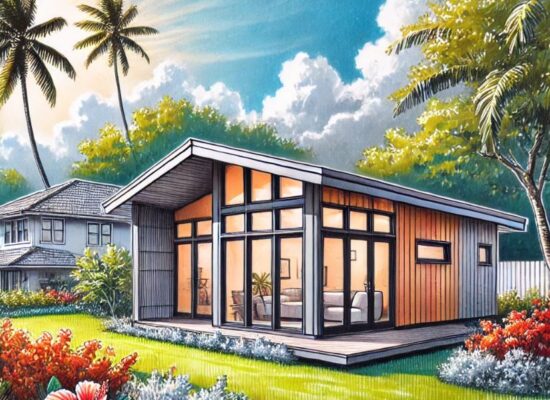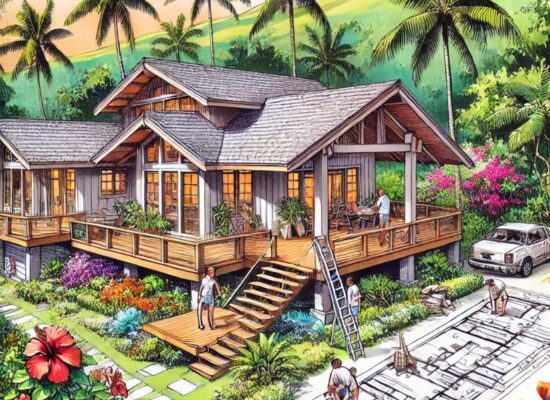Housing shortages have been a long-standing issue in Hawaiʻi, particularly on the Big Island, where both affordability and availability pose challenges to residents. Recognizing this growing concern, Hawaiʻi County has taken a significant step forward with the enactment of Bill 123, a landmark piece of legislation that expands the ability of homeowners to build Accessory Dwelling Units (ADUs) on their properties. This law, signed into effect in October 2024, is designed to increase housing options, accommodate multigenerational living, and support sustainable development in the region.
What is Bill 123?
Bill 123 is a transformative measure aimed at expanding housing availability by allowing homeowners to construct up to three ADUs on their property. Prior to this legislation, homeowners were limited in the number and size of ADUs they could build, but these new changes open up opportunities to create more housing within existing residential areas.
Key Provisions of Bill 123
The bill introduces several new regulations that expand possibilities for homeowners:
- Expanded ADU Allowance: Property owners in Residential (RS), Duplex (RD), Residential-Agricultural (RA), Agricultural (A), and Family Agricultural (FA) zoning districts are now permitted to construct up to three ADUs on a single lot, provided all regulatory conditions are met.
- Size Limitations: Each ADU can be a maximum of 1,250 square feet, ensuring ample space for extended family members, tenants, or additional rental income opportunities.
- Usage Restrictions: The bill prioritizes long-term housing solutions by allowing only one ADU per property to be used as a short-term vacation rental. The remaining units must be designated for long-term residential use.
- Infrastructure Compliance: ADUs must meet strict requirements for sewage disposal, water supply, and road access to ensure that increased development does not strain existing infrastructure.
The Local Impact of Bill 123
Hawaiʻi County has long faced housing affordability issues due to a combination of high property values, an influx of out-of-state buyers, and a booming tourism industry that has reduced the number of long-term rental properties. Bill 123 aims to alleviate these pressures by providing more housing opportunities, particularly for local residents struggling with rising costs.
Economic and Social Benefits
This legislation has the potential to significantly improve the local housing market by:
- Providing More Affordable Housing Options: With the expansion of ADUs, more long-term rental units will become available, increasing supply and potentially stabilizing rental prices.
- Encouraging Family Cohesion: Many Hawaiians live in multigenerational households, and ADUs allow families to remain close while still maintaining some degree of independence.
- Boosting Local Economy: The construction of ADUs will generate work for local contractors, electricians, plumbers, and other tradespeople, further stimulating economic growth.
Considerations Before Building an ADU
Before moving forward with an ADU project, homeowners must navigate several important factors:
1. Zoning and Permits
Homeowners must confirm that their property is in an eligible zoning district and comply with county permitting requirements. Failure to do so can result in legal and financial setbacks.
2. Lot Size and Setbacks
Each property must meet minimum lot size requirements and adhere to setback rules that dictate how close ADUs can be built to neighboring properties or roads.
3. Parking and Accessibility
Certain areas require additional on-site parking for ADU occupants. Additionally, properties must be accessible via roadways that meet county safety standards.
4. Environmental and Infrastructure Considerations
- Water Availability: Some areas of the Big Island face water shortages, which could impact the feasibility of adding new residential units.
- Septic System Requirements: If a property isn’t connected to municipal sewage, owners must consider whether their current septic system can handle the additional waste output.
- Electricity and Utility Access: Upgrading power lines or increasing electricity capacity may be necessary to accommodate new units.
Working with Professionals
Given the complexity of constructing an ADU, consulting with professionals is highly recommended. Architects, structural engineers, and real estate professionals can provide guidance on:
- Optimal ADU design for space efficiency and compliance.
- Cost-effective construction materials that align with Hawaiʻi’s climate.
- Navigating permitting processes and ensuring adherence to building codes.
Sustainable Growth and the Future of Housing in Hawaiʻi
Bill 123 represents more than just housing expansion—it reflects a commitment to community-focused growth and sustainable land use. By making it easier for homeowners to develop ADUs, the county is helping to:
- Retain local families by increasing affordable housing opportunities.
- Foster multigenerational living, a core cultural tradition in Hawaiʻi.
- Reduce homelessness, as more rental units become available to those in need.
- Support economic resilience, with homeowners benefiting from new income streams.
Addressing Potential Challenges
While Bill 123 has numerous benefits, there are also challenges to consider:
- Neighborhood Resistance: Some residents may oppose increased density, fearing that it will change the character of their communities.
- Overburdened Infrastructure: Rapid expansion of ADUs could put stress on existing roads, water systems, and public services.
- Regulatory Hurdles: Navigating local building codes, securing permits, and ensuring compliance can be time-consuming and costly.
Conclusion
The passing of Bill 123 marks a significant step toward resolving Hawaiʻi’s housing crisis while promoting responsible and sustainable growth. Homeowners now have greater flexibility to enhance their properties while playing an active role in alleviating housing shortages.
As residents begin to explore these new opportunities, understanding the zoning laws, building requirements, and potential benefits of ADU development will be crucial. By leveraging the resources available and working with experienced professionals, homeowners can maximize the value of their property while contributing to a more vibrant and inclusive Hawaiʻi.
For those seeking additional guidance, the following resource provides a deeper dive into the implications of Bill 123:



